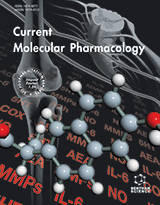Abstract
The major function of the voltage-gated calcium channels is to provide the Ca2+ flux into the cell. L-type voltage-gated calcium channels (Cav1) serve as voltage sensors that couple membrane depolarization to many intracellular processes. Electrical activity in excitable cells affects gene expression through signaling pathways involved in the excitation-transcription (E-T) coupling. E-T coupling starts with activation of the Cav1 channel and results in initiation of the cAMP-response element binding protein (CREB)-dependent transcription. In this review we discuss the new quantitative approaches to measuring E-T signaling events. We describe the use of wavelet transform to detect heterogeneity of transcriptional activation in nuclei. Furthermore, we discuss the properties of discovered microdomains of nuclear signaling associated with the E-T coupling and the basis of the frequency-dependent transcriptional regulation.
Keywords: Image analysis, microdomain, signaling, transcription, voltage-gated calcium channels, wavelet.
Graphical Abstract
Current Molecular Pharmacology
Title:Heterogeneity of Calcium Channel/cAMP-Dependent Transcriptional Activation
Volume: 8
Author(s): Evgeny Kobrinsky
Affiliation:
Keywords: Image analysis, microdomain, signaling, transcription, voltage-gated calcium channels, wavelet.
Abstract: The major function of the voltage-gated calcium channels is to provide the Ca2+ flux into the cell. L-type voltage-gated calcium channels (Cav1) serve as voltage sensors that couple membrane depolarization to many intracellular processes. Electrical activity in excitable cells affects gene expression through signaling pathways involved in the excitation-transcription (E-T) coupling. E-T coupling starts with activation of the Cav1 channel and results in initiation of the cAMP-response element binding protein (CREB)-dependent transcription. In this review we discuss the new quantitative approaches to measuring E-T signaling events. We describe the use of wavelet transform to detect heterogeneity of transcriptional activation in nuclei. Furthermore, we discuss the properties of discovered microdomains of nuclear signaling associated with the E-T coupling and the basis of the frequency-dependent transcriptional regulation.
Export Options
About this article
Cite this article as:
Kobrinsky Evgeny, Heterogeneity of Calcium Channel/cAMP-Dependent Transcriptional Activation, Current Molecular Pharmacology 2015; 8 (1) . https://dx.doi.org/10.2174/1874467208666150507093601
| DOI https://dx.doi.org/10.2174/1874467208666150507093601 |
Print ISSN 1874-4672 |
| Publisher Name Bentham Science Publisher |
Online ISSN 1874-4702 |
 47
47 2
2
- Author Guidelines
- Bentham Author Support Services (BASS)
- Graphical Abstracts
- Fabricating and Stating False Information
- Research Misconduct
- Post Publication Discussions and Corrections
- Publishing Ethics and Rectitude
- Increase Visibility of Your Article
- Archiving Policies
- Peer Review Workflow
- Order Your Article Before Print
- Promote Your Article
- Manuscript Transfer Facility
- Editorial Policies
- Allegations from Whistleblowers
- Announcements
Related Articles
-
Fecal Incontinence in Children and Adolescents
Current Pediatric Reviews P2Y Receptor Activation Affects the Proliferation and Differentiation of Glial and Neuronal Cells: A Focus on Rat C6 Glioma Cells
Current Neuropharmacology Analysis of Heart Rate Variability and Implication of Different Factors on Heart Rate Variability
Current Cardiology Reviews Apis mellifera Proteomics: Where Will the Future Bee?
Current Proteomics The Rhenium Determination in Copper and Molybdenum Ores and Concentrates by ICP Atomic Emission Spectrometry
Current Analytical Chemistry Low 25OH Vitamin D2 Levels Found in Untreated Alzheimer’s Patients, Compared to Acetylcholinesterase-Inhibitor Treated and Controls
Current Alzheimer Research Anticholinesterase and Antioxidant Activities of Natural Abietane Diterpenoids with Molecular Docking Studies
Current Alzheimer Research Nanostructured Lipid Carriers for Intranasal Administration of Olanzapine in the Management of Schizophrenia
Current Molecular Pharmacology Editorial :
Recent Patents on CNS Drug Discovery (Discontinued) Preface
Central Nervous System Agents in Medicinal Chemistry Addressing Depression and Suicidality in the College Population
Current Psychopharmacology Patent Selections:
Recent Patents on CNS Drug Discovery (Discontinued) Targeting Mammalian Target of Rapamycin: Prospects for the Treatment of Inflammatory Bowel Diseases
Current Medicinal Chemistry Collateral Damage: Contribution of Peripheral Inflammation to Neurodegenerative Diseases
Current Topics in Medicinal Chemistry Targeting mTOR Pathways in Human Malignancies
Current Pharmaceutical Design Mast Cells: Target and Source of Neuropeptides
Current Pharmaceutical Design Editorial [Hot Topic: Brain Resilience and Plasticity in the Face of Alzheimer Pathology (Guest Editor: Ira Driscoll & Juan Troncoso)]
Current Alzheimer Research Metabolism of Dietary Flavonoids in Liver Microsomes
Current Drug Metabolism Depression as a Comorbidity in Behcet's Syndrome
CNS & Neurological Disorders - Drug Targets Neurophysiological Alterations in the Prepsychotic Phases
Current Pharmaceutical Design


























